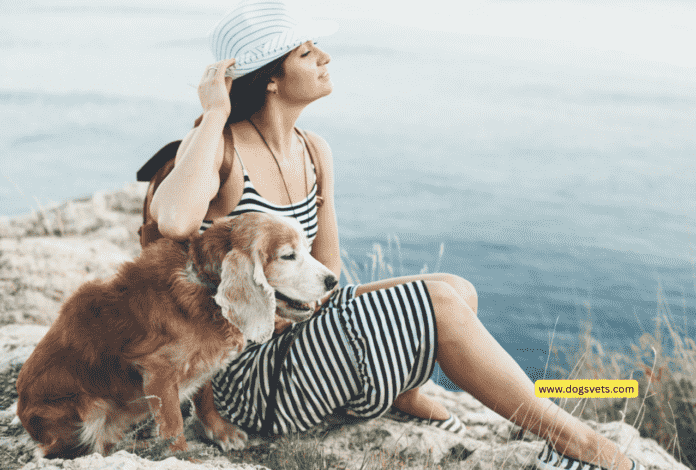Last Updated on January 24, 2024 by Dogs Vets
Preparing Your Pets for Travel
Embarking on a journey with your dog and Maine Coon requires thoughtful preparation to ensure their comfort and safety. Here’s how to get your furry friends travel-ready.
Health Checks and Vaccinations
- Visit the Vet: Schedule a check-up with your vet to ensure your pets are healthy for travel. Discuss any travel-specific concerns, such as motion sickness or anxiety.
- Up-to-Date Vaccinations: Confirm that all vaccinations are current. This is not only important for your pet’s health but also a requirement in many travel and accommodation scenarios.
Familiarizing Pets with Travel Containers
- Gradual Introduction: Introduce your pets to their travel carriers well in advance. Place their favorite blanket or toy inside to create a positive association.
- Practice Runs: Try short, stress-free trips in the car with your pet in the carrier. This helps them get used to the motion and confinement.
Acclimating to New Environments
- Simulating Travel Conditions: Create a calm environment at home that mimics aspects of travel. This can include playing sounds of traffic or airplane noise to acclimate your pets to new sounds.
- Comfort Items: Pack items that smell like home, such as bedding or toys, to provide a sense of familiarity and comfort during travel.

Training and Behavior
- Leash and Harness Training: For Maine Coons, leash training can be beneficial. Start this process well before your trip to ensure they are comfortable being on a leash.
- Behavioral Considerations: Address any behavioral issues, like excessive barking or anxiety, with the help of a professional if necessary.
Expert Advice
For specific advice on traveling with Maine Coons, Oksana from KittyLand is an invaluable resource.
She offers detailed guidance on how to prepare your Maine Coon for travel, addressing unique needs and challenges faced by these majestic cats. Discover more tips and insights from Oksana on KittyLand.
Choosing the Right Destinations
When planning a trip with your furry friends, choosing pet-friendly locations is essential. Research destinations that welcome pets and offer activities suitable for both dogs and Maine Coons.
Considering your pet’s comfort is equally important. Some pets may prefer quieter, rural settings over bustling urban environments.
Essential Gear for Traveling with Dogs and Maine Coons
To ensure a smooth travel experience, packing the right gear is essential. Portable food and water containers are a must-have for feeding your pets on the go.
Don’t forget comfort items, like their favorite blanket or toy, to help them feel secure and at home, wherever you are.
Safety Tips While On the Road or in the Air
Ensuring the safety of your pets while traveling is a top priority, whether you’re hitting the road or taking to the skies.
Here’s how to keep your dog and Maine Coon safe and comfortable during your journey.
On the Road: Securing Your Pet
- Use Appropriate Restraints: For dogs, a well-fitted harness or a crate secured to the vehicle is ideal. For Maine Coons, a sturdy, well-ventilated carrier is best. These restraints not only protect your pets in case of sudden stops but also prevent them from distracting the driver.
- Regular Breaks: Long car rides can be tough on pets. Plan for regular stops to allow your dog to stretch, exercise, and relieve themselves. Use this time to check on your Maine Coon as well, offering water and a chance to use a portable litter box.
- Control the Climate: Keep the car at a comfortable temperature. Never leave your pets in a parked car, especially on warm days, as the temperature inside can rise rapidly to dangerous levels.
In the Air: Flying with Pets
- Choose Pet-friendly Airlines: Research airlines that offer the best pet travel options. Some allow small pets in the cabin, while others have special provisions for pets in the cargo hold.
- Understand Airline Policies: Each airline has its own set of rules for pet travel. Be clear about size and weight limits, carrier specifications, and any additional fees.
- Prepare Your Pet for the Carrier: Prior to your trip, get your Maine Coon accustomed to the carrier. This can reduce stress and anxiety during the flight.
- Visit the Vet: A pre-flight check-up is crucial. Your vet can provide health certificates required by airlines and advise on how to keep your pet calm during the flight.
- Food and Water: Follow guidelines about feeding and watering your pet before and during the flight. It’s usually recommended to feed them a few hours before departure to avoid discomfort.
- Exercise Before the Flight: If possible, give your dog some exercise before heading to the airport. This can help them relax and be more comfortable during the flight.
Remember, every pet is unique, and what works for one may not suit another. Pay close attention to your pets’ needs and behaviors to ensure a safe and pleasant journey for all.
Finding Pet-Friendly Accommodations
Researching hotels and rentals that are pet-friendly is a key step in your travel planning. Look for places that offer amenities for pets, like walking areas or pet-sitting services.
Pet-friendly stays often provide additional comfort for your pet, making your trip enjoyable for everyone.
Activities for Your Dog and Maine Coon While Traveling
Traveling with your dog and Maine Coon opens up a world of exciting activities that can be both fun and enriching for your pets. Here are some ideas to keep them engaged and happy while on your travels.
Outdoor Adventures
- Exploring Nature Trails: Dogs usually love hiking and exploring new scents and sights on nature trails. Ensure the trail is dog-friendly and keep your dog on a leash for safety. For your Maine Coon, consider a pet stroller or a secure harness for short, safe walks in nature.
- Beach Fun: If your destination includes beaches, some are pet-friendly and offer a great opportunity for your dog to play in the sand and surf. Always check beach rules regarding pets beforehand.
- Park Visits: Visiting local parks can be a pleasant experience for both your pets. While dogs can enjoy running and playing fetch, Maine Coons, known for their curious and playful nature, might appreciate the new environment from the safety of a leash or carrier.
Indoor Activities
- Pet-Friendly Attractions: Look for museums, cafes, and stores that welcome pets. These can be great places to explore with your dog and Maine Coon, offering new sights and sounds in a controlled environment.
- Playtime in the Hotel Room: Bring along toys and interactive games. Laser pointers, feather wands, or puzzle toys can keep your Maine Coon stimulated, while chew toys or tug ropes are great for dogs.
Adjusting to Weather
- Rainy Days: For those not-so-sunny days, indoor play is the way to go. Hotel rooms can become fun play spaces with the right toys. Also, consider indoor pet facilities where your dog can run and play.
- Hot Weather: On hot days, ensure your activities are early in the morning or late in the evening to avoid the heat. Always have plenty of water and find shady spots for breaks.
Unique Experiences
- Pet-Friendly Events: Some destinations host pet-friendly events, like dog parades or cat shows, which can be a fun outing for both you and your pets.
- Photo Sessions: Create lasting memories by having a photo session with your pets in picturesque locations. This is a fun way to document your travels together.
Managing Pet Health and Hygiene on the Go
Be prepared to deal with emergencies by knowing the location of local vets. Maintaining pet hygiene is also vital; carry supplies for cleaning and grooming to keep your pet in top condition.
Returning Home: Post-Travel Care for Pets
After your adventure, help your pets readjust to the home environment. It’s also wise to schedule a post-travel health check-up to ensure they haven’t picked up any bugs or stresses from the journey.
Facts Checks
We strive to provide the latest valuable information for pet lovers with accuracy and fairness. If you would like to add to this post or advertise with us, don’t hesitate to reach us. If you see something that doesn’t look right, contact us!

















